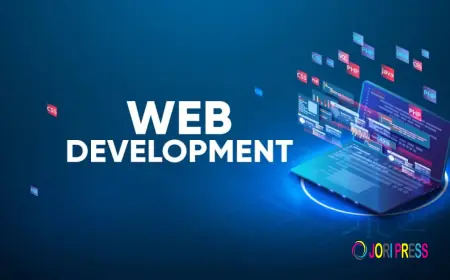Google Ads Performance Max: Pros, Cons, and Best Practices
In an ever-evolving digital advertising landscape, Google has continuously adapted its tools to meet the growing demand for automation and efficiency. One of the latest innovations to take center stage is Google Ads Performance Max, a campaign type that promises advertisers the ability to drive results across all of Google's inventory from a single campaign. From Search and Display to YouTube and Gmail, Performance Max combines Google's AI-driven optimization with expansive reach. But as with any powerful tool, it comes with its own set of advantages, limitations, and strategic nuances. This article will explore the pros, cons, and best practices of using Performance Max to help advertisers make informed decisions and improve campaign performance.
Understanding Google Ads Performance Max
Launched globally in late 2021, Performance Max is designed to supplement your existing keyword-based Search campaigns to help you find more converting customers across all of Google’s channels. Unlike traditional campaign types, it uses automation to optimize bidding, budgeting, audience targeting, creatives, and attribution in real time. You simply provide the necessary assets—such as headlines, descriptions, images, and videos—and Google’s AI does the rest, testing asset combinations and distributing your ads where they are most likely to perform.
The defining feature of Performance Max is its goal-based nature. You tell Google what conversions matter most—whether it's sales, leads, or in-store visits—and the system focuses entirely on maximizing that objective.
The Pros of Using Performance Max
Performance Max stands out for its ability to eliminate guesswork. One of its most compelling advantages is its access to the full range of Google’s inventory. Traditional campaign types often require separate strategies for Search, Display, YouTube, and other platforms. Performance Max simplifies this by bundling them into a single campaign, saving time while expanding reach.
Another significant advantage is its use of machine learning to optimize ad delivery. Google’s algorithms analyze signals in real time, such as device, location, search intent, and user behavior, to ensure your ads reach the right people at the right time. For marketers who want to scale quickly without micromanaging dozens of campaigns, this can result in improved conversion rates and reduced CPA.
Asset automation is also a win. You can supply a variety of creatives—text, image, video—and Google will dynamically combine and test these variations, continuously learning which combinations perform best. This dynamic optimization can help overcome ad fatigue and improve user engagement.
Performance Max also shines when it comes to lead generation and online sales for e-commerce and service-based businesses alike. Retailers using the Merchant Center integration benefit from greater product visibility across shopping ads, while service providers can target high-intent customers through AI-powered signals.
The Cons of Performance Max
Despite its strengths, Google Ads Performance Max is not without flaws. The most cited concern among advertisers is the lack of transparency. While Google's AI manages a lot behind the scenes, it doesn’t always provide detailed reporting on where ads appear or how each asset contributes to performance. This makes it difficult to understand what’s working and why.
Another downside is the limited control over placements and targeting. Unlike traditional campaigns where you can exclude placements or target specific keywords, Performance Max limits manual intervention. This can lead to your ads showing up in less relevant contexts or to audiences outside your ideal demographic.
Data cannibalization is another potential issue. Performance Max campaigns can overlap with existing Search campaigns and sometimes take credit for conversions that might have happened anyway. Without proper setup and campaign priority settings, this can lead to inefficient budget allocation and skewed attribution.
Additionally, while the automation can be powerful, it also means that new advertisers might not fully learn the strategic fundamentals of digital advertising. That’s one reason many professionals still recommend supplementing their hands-on learning with a performance marketing course online, which offers foundational skills alongside advanced tactics.
Best Practices for Maximizing Performance Max Campaigns
While automation is central to Performance Max, strategic input from marketers is still essential. A foundational best practice is to provide diverse, high-quality creative assets. Since the system relies on testing combinations of headlines, descriptions, and media, the more options you supply, the more data it has to optimize effectively.
Setting the right goals is equally critical. Because the campaign is goal-based, clearly defining your conversion actions—whether it’s purchases, sign-ups, or phone calls—is crucial. Ensure your Google Ads conversion tracking is set up correctly, as the AI’s learning and bidding strategy depends heavily on accurate data.
Audience signals, though not mandatory, are highly recommended. These signals give Google initial direction about your ideal customers, helping to speed up the learning process and improve performance from the start. You can use customer lists, website visitors, or segments based on interests and behaviors.
Keeping existing Search campaigns active alongside Performance Max is another effective strategy. While Performance Max can drive incremental value, Search campaigns offer precision and transparency. When used in tandem, they create a comprehensive funnel, with Performance Max handling discovery and upper-funnel reach while Search covers direct intent.
Another important tip is to monitor campaign performance through the new Insights page. Although Google doesn’t reveal detailed placement-level data, the Insights tool can help you identify which audience segments, search categories, and creative assets are driving conversions. Use this data to refine future creative and audience inputs.
Finally, test incrementally. Don’t launch a full-scale campaign right away. Start with a smaller budget and a narrow product or service set. Observe performance trends over a few weeks before scaling. This controlled approach allows for better understanding and adaptation without risking large portions of your advertising budget.
The Future of Performance Max
Google continues to iterate on Performance Max, responding to feedback and expanding its capabilities. Recent updates have introduced features such as asset group reporting, keyword insights, and more granular controls, hinting at a future where transparency and automation can coexist more harmoniously. As machine learning technology advances, Performance Max is likely to become a cornerstone in most digital advertising strategies.
However, it will always be important for marketers to retain critical thinking and campaign oversight. Even the best AI tools require human direction, especially when it comes to understanding brand voice, long-term objectives, and customer relationships.
Final Thoughts
Google Ads Performance Max represents a major leap forward in campaign automation and reach, offering marketers a powerful tool to drive performance across Google's extensive ecosystem. While it brings the benefits of scale, efficiency, and real-time optimization, it also presents challenges around control and transparency. By understanding these trade-offs and implementing best practices, advertisers can harness the strengths of Performance Max while mitigating its limitations.
For professionals looking to stay ahead in the digital landscape, pairing hands-on campaign management with a credible performance marketing course online can bridge the knowledge gap and lead to smarter use of tools like Performance Max. Whether you’re managing e-commerce sales or lead generation, Performance Max is shaping the future of automated advertising—and now is the time to get it right.
What's Your Reaction?
 Like
0
Like
0
 Dislike
0
Dislike
0
 Love
0
Love
0
 Funny
0
Funny
0
 Angry
0
Angry
0
 Sad
0
Sad
0
 Wow
0
Wow
0
















































